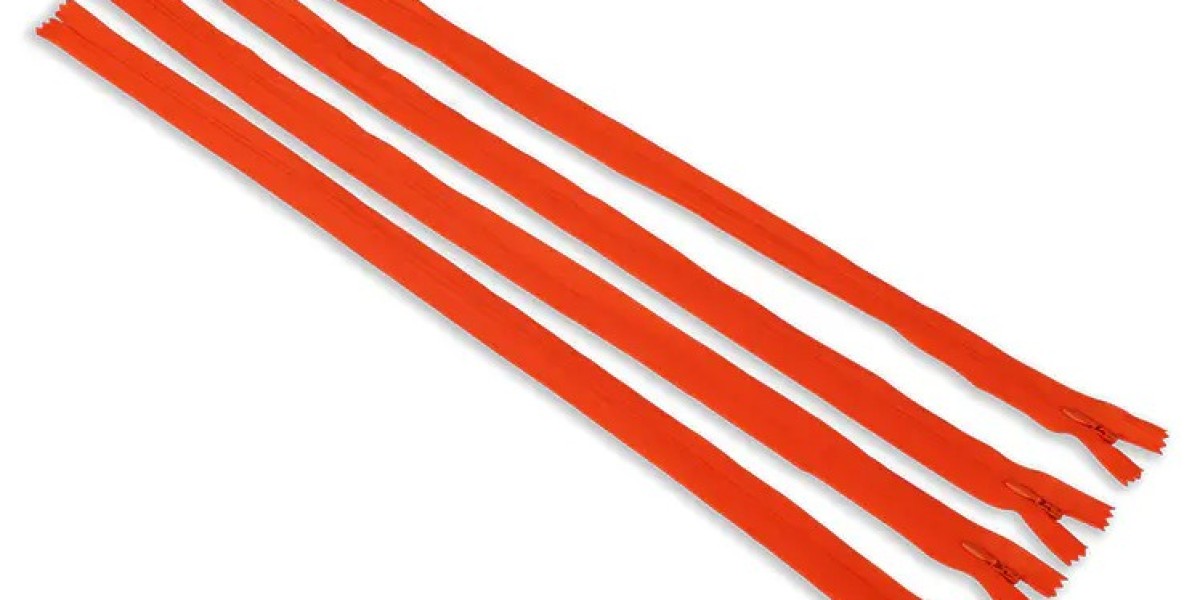Invisible zippers are a preferred fastening solution in many types of clothing, particularly where a sleek, streamlined appearance is desired. The #3 invisible zipper is widely used in garments such as dresses, skirts, trousers, and outerwear, where the goal is to minimize visible seams while ensuring a secure closure. One of the most critical elements of the invisible zipper is the cloth edge, which helps to maintain the zipper's functionality and aesthetic appeal.
The primary application of the #3 invisible zipper with cloth edge is to provide a concealed fastening method that does not disrupt the overall design of the garment. Unlike traditional zippers, which often create visible bulges or disruptions along the seam, the #3 invisible zipper integrates seamlessly into the fabric. The cloth edge, which is sewn along the zipper chain, ensures that the teeth of the zipper remain hidden, creating a smooth finish. This is particularly important in garments such as evening dresses, formal wear, and tailored pieces, where visual continuity is a priority.
For designers, the cloth edge also provides flexibility in terms of fabric choice. The zipper can be paired with lightweight materials like chiffon or silk, as well as heavier fabrics like wool or denim. The edge ensures that the zipper’s functionality remains intact, even when used with fabrics that have varied textures or drape.
In addition to its aesthetic contribution, the cloth edge of the #3 invisible zipper plays a key role in ensuring the durability and reliability of the fastening. The cloth edge not only stabilizes the zipper, helping it to stay in place during use, but it also supports the integrity of the zipper teeth, which can sometimes be vulnerable to wear and tear if not properly secured.
The #3 invisible zipper is commonly used in applications where frequent movement or bending is involved. For example, in skirts or dresses with structured designs, the zipper needs to endure repetitive stress without compromising its ability to function smoothly. The cloth edge is stitched in such a way that it prevents the zipper teeth from catching on the fabric, ensuring that the zipper glides easily without snagging.
Beyond clothing, the #3 invisible zipper with cloth edge is also applied in home textile products, such as cushions, pillowcases, and bedding. In these applications, the cloth edge is particularly important for ensuring that the zipper remains discreet, allowing the design of the textile to take center stage without the distraction of a visible closure. The added benefit is that the zipper, once installed, remains functional even with heavy use and frequent washing, which is often a concern for home textile products.
From a user’s perspective, one of the most appreciated features of the #3 invisible zipper with cloth edge is its ease of use. Unlike traditional zippers that may require more effort to close and open, the invisible zipper offers a smooth and effortless operation, thanks to its design and the added support from the cloth edge. Moreover, the cloth edge helps to prevent the zipper from being exposed to damage during laundering, which contributes to its longevity.
The #3 invisible zipper with cloth edge has become a go-to fastening solution in both fashion and home textiles, offering a combination of aesthetic appeal and functional reliability. Its application in garments ensures a clean, sophisticated look while maintaining durability, even with frequent use. As the demand for versatile and discreet closures continues to grow, the role of the cloth edge in invisible zipper technology will remain central in meeting the needs of both designers and consumers alike.


